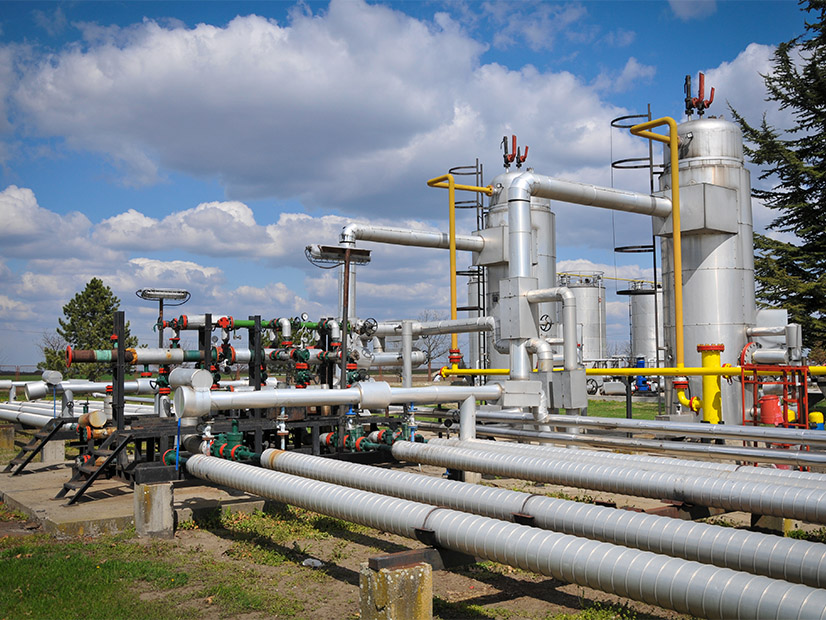The four RTOs released a white paper Feb. 21 calling for improvements to the coordination of the electric and natural gas systems to benefit customers of both.
ISO-NE, MISO, PJM and SPP jointly produced the paper, which includes recommendations that could be tailored to regional specifics along with a few overarching issues that would benefit from national coordination. While the paper calls for additional changes, the RTOs noted that progress has been made, as the grid’s performance in winter storms this January was notably better than earlier events.
“These more recent experiences underscore the value of better aligning both the purchase of commodity and delivery of natural gas,” the paper said. “If anything, these most recent positive experiences underscore the value of focusing on additional enhancements — building on the work of each of the regions — to better align these two industries. The initiatives suggested herein aim to enhance that coordination, ultimately benefiting customers in both systems through improved reliability and market efficiency.”
The paper breaks up its recommendations into three broad buckets: gas market enhancements to improve supply and pricing options to ensure a reliable generation fleet as it rapidly evolves; operational enhancements aimed at specific needs; and regulatory coordination of state and federal authorities to address emergencies.
The recommendations are aimed at different groups including state regulators, FERC, gas pipelines, gas marketers, generators, the ISO/RTOs, the North American Energy Standards Board, the Pipeline and Hazardous Materials Safety Administration, and state and federal lawmakers.
The report calls for changes like increased transparency in secondary natural gas markets overseen by the states; enhancing weekend and holiday gas supply and liquidity (both from pipelines and any excess sold by local distribution companies); developing additional reserve products in the electricity markets; and addressing emergency authority to address shortfalls either through the Defense Production Act or new legislation.
The RTOs also call for “targeted permitting reforms,” which have been a hot topic on Capitol Hill for more than a year.
“However, permitting reforms for transmission versus pipelines are being considered in separate silos that largely ignore the interdependent nature of these two systems,” the paper said. “The electric industry and gas pipeline industry should coordinate so as to better educate policymakers on the interdependencies of these two systems and the need for permitting reform to address these co-dependencies in a comprehensive manner.”
Targeted expansion of the pipeline system is needed for reliability, the paper said, but faces challenges because of environmental regulations, permitting complexities and local opposition to siting.
“While the joint RTOs support targeted expansion of the pipeline system, we believe that in the interim, increased reliability of the electric system can be achieved from optimizing both the operation of the existing infrastructure and the liquidity of gas markets,” the paper said.
Much of the coordination with the gas industry involves working with pipelines; their main trade group, the Interstate Natural Gas Association of America, said it was still reviewing the RTO’s proposal and could not offer specific comments.
“However, natural gas has a critical role in ensuring electric reliability, and INGAA is committed to working with end users, including [local distribution companies] and electric generation customers, to ensure they have the natural gas they need to keep American homes and businesses running, especially during winter storms,” CEO Amy Andryszak said.
INGAA worked with the Natural Gas Supply Association and the Electric Power Supply Association to craft recommendations to improve coordination of the two industries that were filed before FERC’s technical conference on reliability last year. (See FERC Conference Highlights Challenges of Evolving Grid.)
Making the gas system more flexible is important to getting more renewables onto the grid, and the RTOs’ suggestions can help that happen, Michael Jacobs, senior energy analyst with the Union of Concerned Scientists, said in an interview. Renewables will make more and more of the generation stack, but natural gas will still be needed to help balance that, absent advancements in other technology.
“That actually will require a lot of change in the way the gas pipelines and the gas generators do their business,” said Jacobs. “So, I picture a consolidation of gas pipelines, because we won’t need as many. They need to keep pressure in their system, so they need to have some level of utilization. And so, to do that with fewer pipelines can be more viable than doing it with the same number of pipelines we have.”
He noted that the RTOs’ paper assigns specific policy changes to the entities that would need to make them, something that has not been done in earlier reports.
“The four RTOs that put this together deserve some credit for saying those things and putting out an actionable document,” he added. “They still have work to do, but they clearly name other organizations that have work to do. And that’s the kind of thing that’s sort of been missing … this kind of public discussion about how to coordinate across these agencies and deal with the authorities that are needed.”


